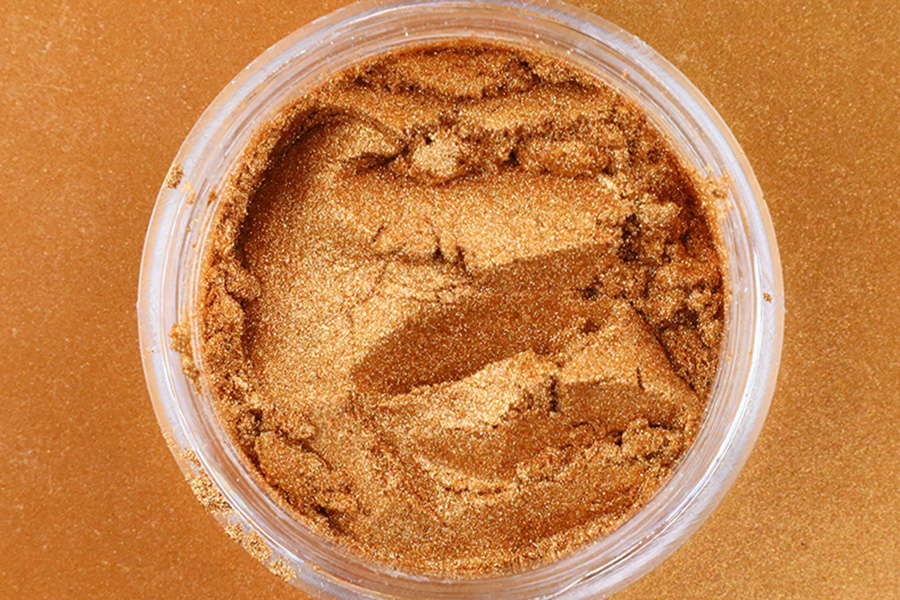Known for their ultra-chromatic effects that shift color depending on the viewing angle, these pigments have become increasingly popular across industries like automotive finishes, cosmetics, coatings, and packaging. However, to truly unlock the full potential of these stunning color-shifting effects, it’s essential to choose the right substrate. The substrate not only serves as the foundation for the pigment but also plays a significant role in enhancing the pigment’s optical performance, ensuring durability, and contributing to the overall aesthetic quality of the final product.
Synthetic fluorphlogopite, the primary base material for Metallic Crystal Chameleon Pigments, is a key player in determining how well these pigments will perform on different substrates. Fluorphlogopite, a synthetic mica, is chosen for its superior stability and light-reflecting qualities. This highly durable substrate has the unique ability to enhance the multi-dimensional effects of chameleon pigments, making it ideal for applications requiring both beauty and longevity. When used as a base, it provides the perfect balance of smoothness and light-reflective properties, helping to bring out the vivid, shifting hues that make these pigments so popular.

In automotive coatings, for instance, the surface needs to be smooth, durable, and capable of handling exposure to elements like UV light, chemicals, and physical abrasion. Here, metal, high-quality plastics, and glass work particularly well with Metallic Crystal Chameleon Pigments. The smoothness of these materials allows the pigments to spread evenly, creating a flawless, glossy finish that showcases the color-shifting effects at their best. Automotive manufacturers often opt for high-performance paints or coatings that incorporate metallic mica-based pigments, ensuring that the color changes are not only striking but also stable under harsh environmental conditions. The metallic luster of the pigment is also accentuated on glossy, smooth surfaces, amplifying the dynamic visual appeal that the pigments provide.
For cosmetic applications, substrates like silicone, acrylic, and various oils provide the perfect canvas for Metallic Crystal Chameleon Pigments. These substrates offer a smooth texture, allowing for seamless blending, and their high level of transparency or translucency enables the color shift to be seen clearly. In products like eyeshadows, highlighters, or nail polishes, fine and uniform dispersion of the pigments is crucial to achieving a smooth, even finish that reflects light in the most flattering way. The non-porous nature of these materials ensures that the pigments retain their vibrant, shifting effects without being dulled by the substrate. Additionally, the stability and durability of the pigments when applied to these substrates ensure that the color-changing effect lasts throughout wear, making them ideal for cosmetics that require both visual impact and long-lasting performance.
In industrial applications, substrates such as plastics, ceramics, and even some textiles are often used in combination with Metallic Crystal Chameleon Pigments. In plastics, the smoothness and moldability allow the pigments to be evenly distributed across the surface, creating uniform color effects that change depending on the angle of view. Similarly, ceramics offer a smooth, glazed surface that helps reflect the pigments' vibrant hues, making them ideal for decorative tiles, crockery, and other decorative items. The stability of the pigment on these substrates ensures that the effects won’t fade over time, making them perfect for long-lasting industrial applications.
Another substrate that can enhance the performance of Metallic Crystal Chameleon Pigments is glass. In decorative glassware, bottles, and architectural coatings, glass provides an excellent surface for showcasing the color-shifting effects. Its transparent nature allows light to interact with the pigments in ways that intensify the visual effects. The smooth surface of glass also helps prevent the pigments from clumping or settling, which can sometimes occur when working with certain types of coatings or substrates. Whether it's a luxury perfume bottle, an art installation, or a high-end architectural feature, glass provides an elegant, transparent medium through which the full spectrum of color-shifting effects can be appreciated.

